Geely strives to push sustainability in all areas, including the manufacturing of its cars. This Earth Day, let’s take a look inside the plants to see how Geely makes its cars in a responsible way and with minimal environmental impact.
Geely Holding prides itself on the progress it is making in the area of green mobility – with brands and products that span the full range of fuels include electrified, plugin hybrids, affordale pure electric and high-performance models, Geely is making waves when it comes to cleaner, greener transportation. But Geely’s sustainability mission begins long before their cars hit the road – the group is leading the charge with highly efficient, environmentally friendly manufacturing plants.
Geely’s sustainability mission begins by choosing the perfect place – that is to say a location away from natural protected areas home to sensitive and vulnerable plant and animal. Once construction is underway, the waste it creates is sorted by category to expedite the recycling process and the original topsoil, removed when the plant’s foundations are laid, is stored so that the environment can be fully restored in the future.

As the production line comes to life, the mission continues: the plants’ processes are constantly being updated for greener practices of reducing waste and energy consumption and using more sustainable energy sources to power processes. By creating these greener factories, Geely can make its contribution to a sustainable future and take ownership of the management of by-products of the manufacturing process.
The bright side of manufacturing
Though you wouldn’t notice from ground level, the roof of Geely’s Hangzhou Bay plant is completely covered by high-tech solar panelling. With the help of the region’s temperate climate, these solar panels can produce energy most of the year, and combined with the solar energy farms of Geely’s other plants across the country produce 100 million kilowatt-hours of power annually, which it expects to triple by the year 2022. The use of this renewable energy source is estimated to reduce 10,000 tonnes of CO2 from being released into the Earth’s atmosphere every year.
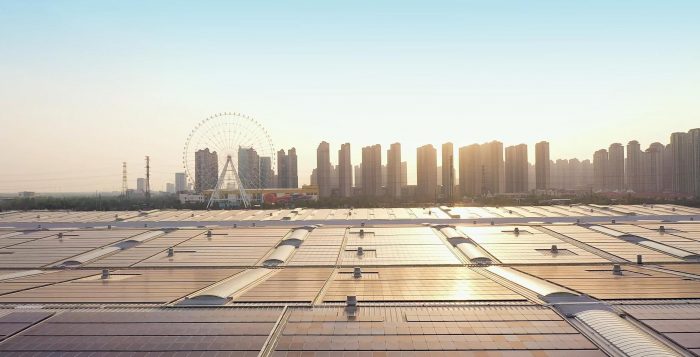
Furthermore, to maximise the efficiency of this energy source a power storage grid has been developed which utilises the batteries from old service vehicles from recycled electric cars. These batteries have been given a second life as they store excess energy for later use and prevent any excess power generated from the solar grid from being lost.
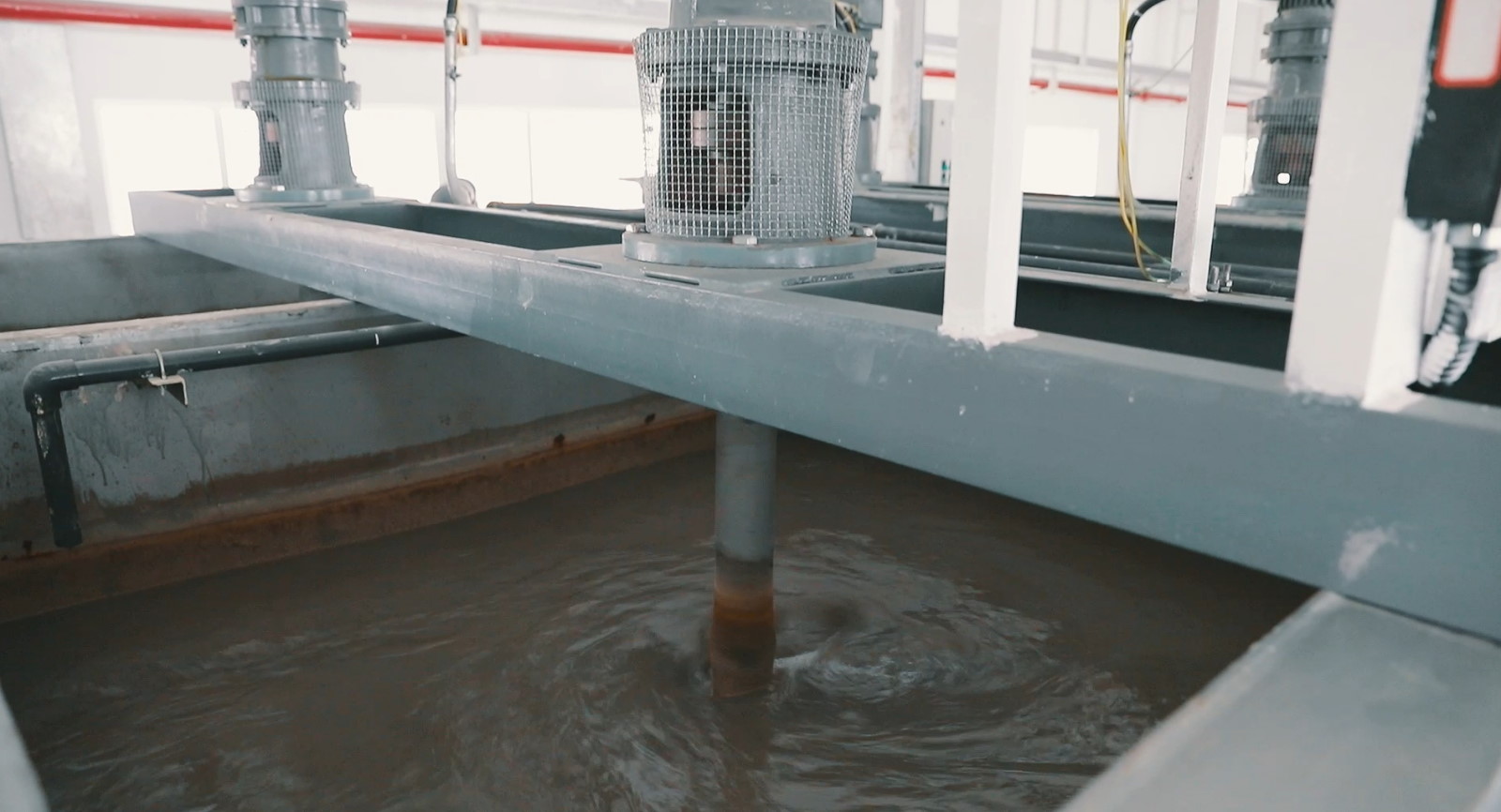
Water; Earth’s most precious resource
Water is an essential resource in the car manufacturing process, and managing it well, including how it is recycled and reused, can help a great deal towards creating plants that are both efficient and ecofriendly. An example of one way in which Geely’s factories aim to do this is during the paint application process: to reduce the amount of water consumed during this step of production, Geely uses a technique known as ‘reverse flow’ washing which makes use of recycled water. This allows a water recycling efficiency of over 90% – a number twice that of the national standard.
All these measures mean that a single manufacturing plant could save as much as 6,000 tonnes of industrial wastewater each year, enough to fill around two and a half Olympic swimming pools.
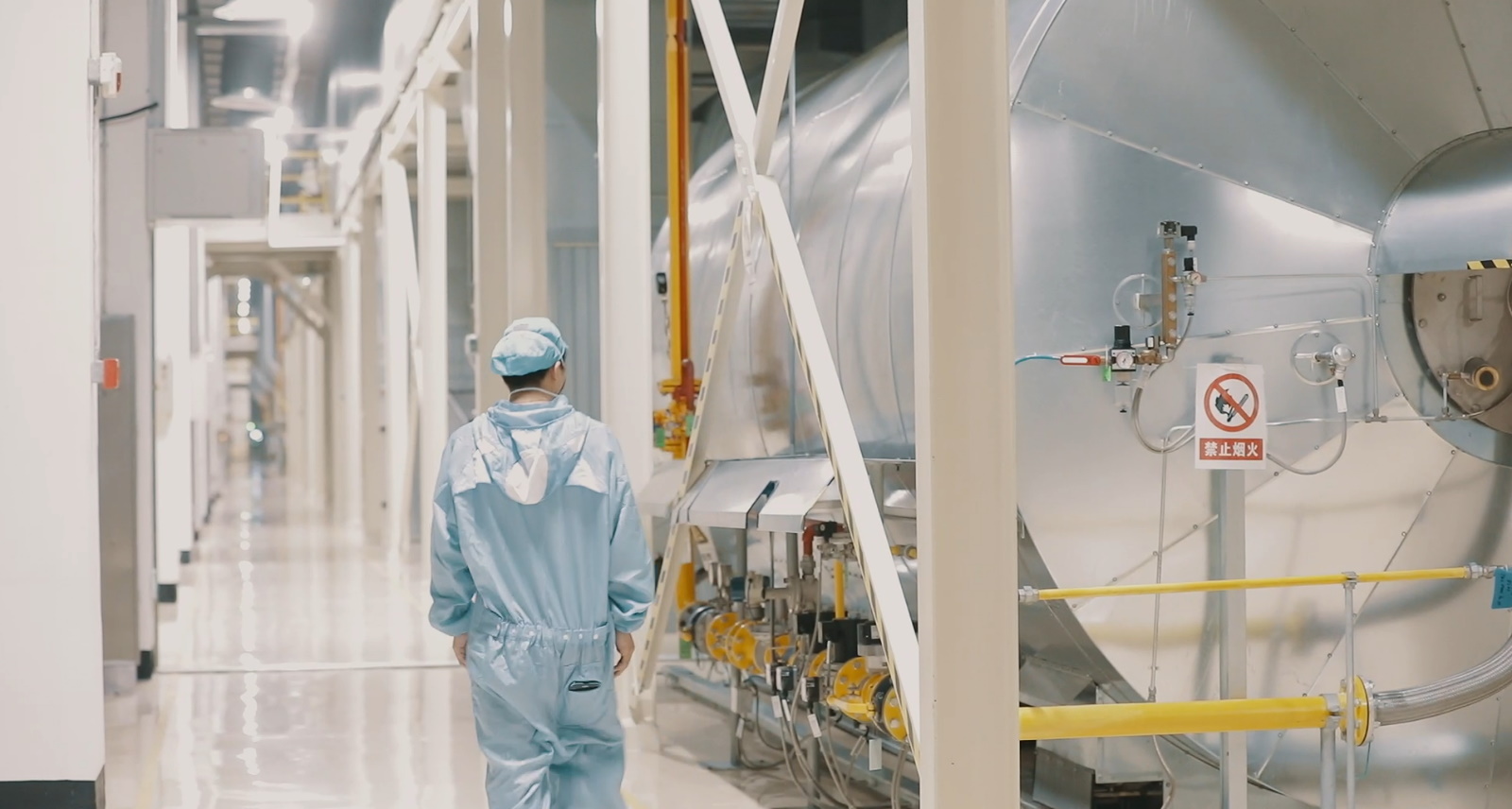
A breath of fresh air
Geely is always striving to achieve zero carbon emissions, or zero waste, in all areas: product design, manufacturing, automotive use, shared mobility and the recovery of materials. In manufacturing, steps are being taken to further reduce the amount of harmful gas produced. In just one year, from 2018 to 2019, the amount of Nitrogen Oxide (NOX) and Sulphur Oxide (SO2) emissions produced during manufacturing processes was reduced by 60% and 50% respectively.
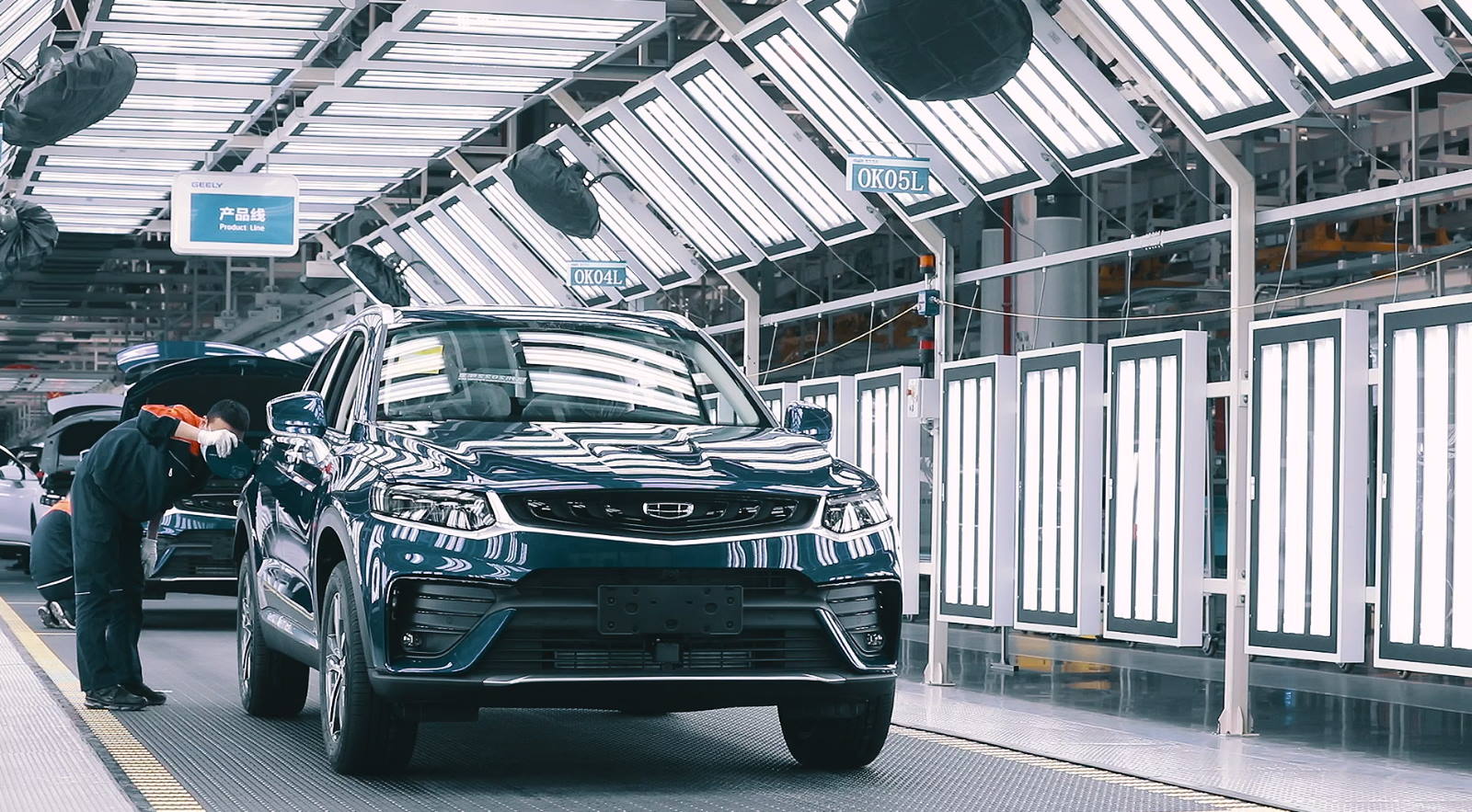
Using zeolite, a naturally-occurring material, harmful chemicals are absorbed from the exhaust gases produced during painting. A thermal combustion plant heats these fumes to 750-degrees and pushes them through an exhaust incinerator, which removes 99% of VOCs (volatile organic compounds). When testing car emissions at the end of the manufacturing line, the process is fully automated. A suction port drops and aligns with the vehicle’s exhaust, removes the gases and transports it to a safe area.
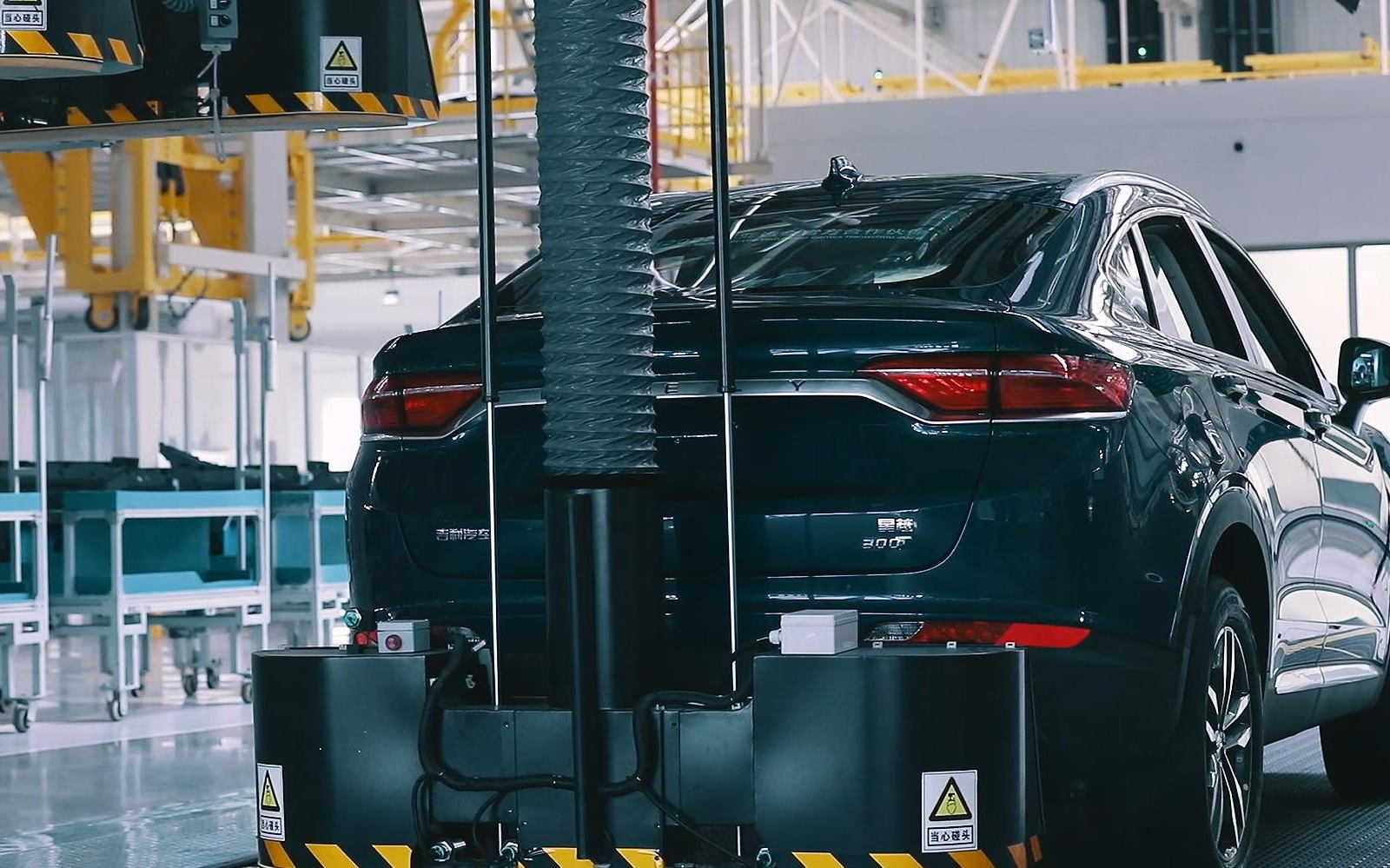
Waste not, want not
Development of the painting process has allowed every drop of paint to go even further, creating an eco-friendly result with the added benefit of being cost-effective. In the car painting chamber, Geely’s facilities maximize effective use of paint and have been able to reduce paint used by 1 litre for every vehicle that passes through.
By using the nation’s most advanced coating technologies, the process also reduces the energy expended by machinery during painting, and advanced sewage and exhaust treatment systems lower emissions and waste materials created as a result. In this way, a traditionally-harmful step of the car manufacturing process can be perfected to reduce its effect on the world.
By not only promoting green mobility but also leading the way with more sustainable production of its vehicles, Geely is hoping to inspire others to join it on its quest for a green, clean future. As the president of Geely Holding Group expresses, “Humanity’s existence depends upon healthy ecosystems; Geely has always aimed to be a responsible member of society by providing sustainable mobility solutions and producing vehicles in a sustainable manner that benefits all of society.”
See below for the full video


